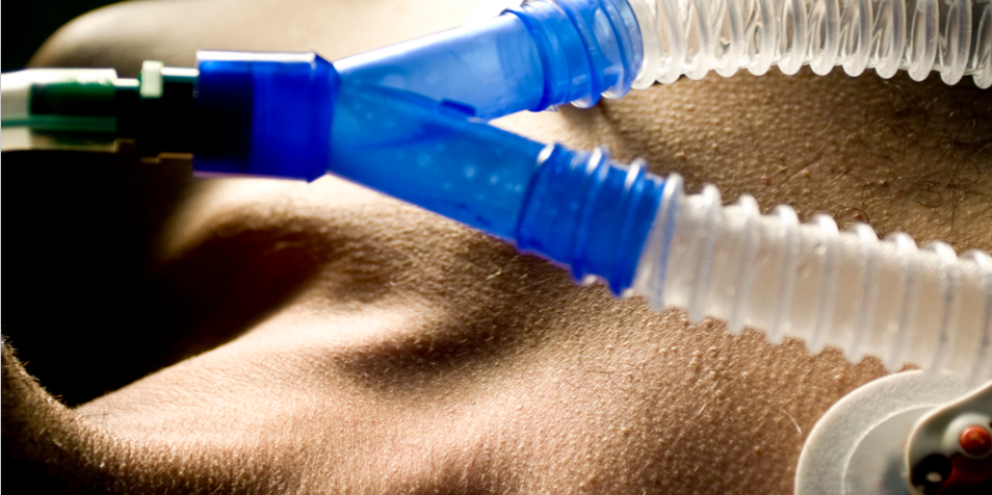
While the concept of low-flow anesthesia, or LFA, is not new, having been first described in 1952 by Foldes et al, there has been some question as to what constitutes LFA versus minimal-flow anesthesia1. However, because LFA offers a multitude of benefits to the hospital, the patient and the environment, adopting the use of an LFA technique is an important consideration in the practice of anesthesia.
In this article, we’ll discuss not only the definition for LFA, but also the differences between low flow and minimal flow, as well as the benefits that may be achieved through LFA.
Open vs. closed anesthetic circuits
The basic requirement for conducting LFA is the use of a rebreathing system. With this system, the unused gases and anesthetic agent contained in the patient’s exhaled breath are reused in the next inhaled patient breath.
By enabling exhaled anesthetics to be rebreathed rather than wasted through the scavenging system, circle anesthesia circuits are intended to lower the amount of inhaled anesthetic waste. The amount of rebreathing is controlled by the fresh gas flow, and when the exhaled gas is rebreathed, a carbon dioxide absorbent is required. Closed circuit anesthesia occurs when the fresh gas flow matches a patient’s oxygen consumption, essentially when all the exhaled gas is delivered back to the patient. In principle, the patient's oxygen consumption equals the minimal safe, fresh gas flow, which is oxygen only2.
The minimum safe, fresh gas flow must consider extra losses (gas sampling and leaks) that most anesthetic delivery systems experience in addition to oxygen consumption. Open-circuit anesthesia develops when no exhaled gas is rebreathed and all of it exits the circuit via the scavenging system. An open circuit, as a rule, exists when the fresh gas flow exceeds minute ventilation (VE). More exhaled gas is rebreathed, and more carbon dioxide absorbent is consumed as fresh gas flow is decreased from an open circuit to a closed-circuit condition2.
The anesthesia circle system is considered open if the fresh gas is fed into the rebreathing system in the amount that exceeds 50% - 100% of minute volume3.
What is low-flow versus minimal-flow anesthesia?
The classification of gas flow rate was set by Baker in 1994 and is still considered valid. Based on his classification, fresh gas flow rate is divided into few categories: metabolic-flow (<250 ml/min), minimal-flow (250-500 ml/min), low-flow (500-1000 ml/min), medium-flow (1-2 L/min), high-flow (2-4 L/mi) and very high-flow (>4 L/min)6.
Therefore, the main difference between low- versus minimal-flow anesthesia is that in LFA, the fresh gas flow is reduced to 1.0 L/min, while in minimal-flow anesthesia, the fresh gas flow is reduced between 0.25 L/min and 0.5 L/min.
This is important because very little anesthetic gas is required to keep a patient asleep during surgery, and any extra is released into the atmosphere. The flow rate of the carrier gas, or FGF, has a significant role in determining the amount of anesthetic gas utilized during a surgical procedure. FGF is controlled by anesthesia practitioners using values between less than 1 L/min (low) and more than 10 L/min (very high). At the lower flow gas flow rates level (FGF), the patient rebreathes some of the exhaled anesthetic gas. So therefore, a significantly lower amount of inhalational anesthetic is vented into the atmosphere5.
While LFA is characterized as gas flows under 1 L/min, the term "LFA" is also typically used to refer to inhalation anesthetic procedures with a semi-closed rebreathing system and a rebreathing rate of at least 50%4.
Phases of low-flow anesthesia
According to standard procedure, premedication, preoxygenation and induction of anesthesia are carried out. A laryngeal mask or endotracheal intubation is followed by the patient's connection to a rebreathing system. The LFA approach usually goes through three phases: initial high-flow, low-flow, and the recovery phase4,6.
A high fresh gas flow of approximately 6.0 L/min of 100% oxygen is characteristic of the initial phase, which lasts 10 to 20 minutes. Denitrogenation involves high-flow 100% O2 ventilation to remove the nitrogen in the blood. Denitrogenation removes the nitrogen from the lungs, which makes room for more O2. The oxygen reserves and functional residual capacity both rise due to this phenomenon which helps to extend the safe apnea time3,4,6.
Following the induction phase, fresh gas flow is decreased to the appropriate level (1 L/min or less) during the low-flow phase. Re-breathing rate rises noticeably when the flow rate is decreased. When the flow is reduced, the oxygen concentration should be raised to at least 40% in order to maintain the inspired oxygen concentration above 30% of volume. The amount of anesthetic vapor delivered to the respiratory system will decrease when rebreathing occurs and in parallel to the decrease in flow rate. Thus, constant monitoring of oxygen and anesthetic drug concentration is a crucial concern in LFA4,6,7,8.
Carbon dioxide (CO2) wash-out is crucial for low fresh gas flow anesthesia. Due to absorbent exhaustion, CO2 content in the ventilation system dramatically increases, since rebreathing volume in LFA is higher than in high-flow anesthesia. As a result, CO2 absorbent should be monitored until it is exhausted by looking for color changes and increases in inspired CO2 (FiCO2) and then be replaced at a minimum of once a week. Double or big single canisters should be employed in anesthetic machines without CO2 monitoring devices. 4,7.
During emergence, the vaporizer and nitrous oxide, if used should be turned off sooner toward the end of the surgical procedure since the low flow does not immediately wash out the volatile anesthetic agent6,7,8. To efficiently remove any remaining anesthetic in the patient or circuit, the patient may be switched to high-flow oxygen at the end of the surgery. This enables much faster wash out of residual anesthetic gas in the circuit of the anesthetic machine and the lungs6,9.
Advantages of LFA
There are several benefits of LFA. The use of low-fresh gas flow during anesthesia improves the flow dynamics of the air that is inhaled, which is very important.
Benefits of LFA include3:
- Increases in mucociliary clearance
- Decreases in fluid loss
- Reducing the need for inhalational anesthetics
- Improving body temperature and humidity homeostasis
- Decreasing environmental pollutants
- Decreased cost of anesthetics
Numerous investigations have demonstrated that low-flow methods enhance anesthetic gases' heat and moisture conditions, resulting in improved effects on respiratory functions and mucociliary clearance. The heating of the gases significantly aids the prevention of postoperative hypothermia.
Since employing volatile agents and anesthetic gases decreased as a result of reducing gas flow, this relationship between drug-related expenses and costs associated with drugs was shown to be apparent3,6,7. We will delve deeper into the environmental and financial benefits of LFA below.
Financial and environmental benefits of low-flow anesthesia
Inhalational anesthetics are thought to account for 20% to 25% of all anesthetic drug costs in the field of anesthesia. Cutting fresh gas flow (FGF) has been shown to have the potential to lower costs by reducing the use of inhalational agents. Low-flow anesthesia has been shown to significantly reduce anesthetic drug costs without increasing the frequency of adverse outcomes for patients2,7,8,9.
Since less volatile agent leaks out of the circuit through the adjustable pressure limiting valve and the scavenging system when gas flow rates through the breathing circuit are reduced, there are clear environmental and financial benefits. Very little of the volatile agent is metabolized by the patient, resulting in more volatile agent conservation per case and less ecological pollution released into the atmosphere2,5.
Conclusion
While there has been some confusion as to the difference between low- and minimal-flow anesthesia, the term LFA is generally denoted as gas flows under 1 L/min, using a rebreathing system, wherein the unused gases and anesthetic contained in the patient’s exhaled air are reused. LFA offers clinical, economic and ecological benefits by conditioning the breathing gas, reducing the amount of volatile anesthetics emitted and diminishing the requirement for anesthetics, particularly those that contribute to the greenhouse gas effect.
References
- Carter, L. A., Oyewole, M., Bates, E., & Sherratt, K. (2019). Promoting low-flow anaesthesia and volatile anaesthetic agent choice. BMJ open quality, 8(3), e000479. https://doi.org/10.1136/bmjoq-2018-000479.
- Feldman, J. M., Lo, C., & Hendrickx, J. (2020). Estimating the Impact of Carbon Dioxide Absorbent Performance Differences on Absorbent Cost During Low-Flow Anesthesia. Anesthesia & Analgesia, 130(2), 374–381. https://doi.org/10.1213/ANE.0000000000004059.
- Hönemann, C., Hagemann, O., & Doll, D. (2013). Inhalational anaesthesia with low fresh gas flow. Indian Journal of Anaesthesia, 57(4), 345. https://doi.org/10.4103/0019-5049.118569
- Hatırlatma, A. B., & Anestezi, D. A. (2016). A Reminder to Anesthesiologists: Low-Flow Anesthesia. Journal of Clinical and Analytical Medicine, 1(183).
- Alicia Edmonds, Hilary Stambaugh, Scot Pettey, & Kenn B. Daratha. (2021). Evidence-Based Project: Cost Savings and Reduction in Environmental Release With Low-Flow Anesthesia. AANA , 89(1)(27–33).
- Baker, A. B. (1994). Back to Basics—A Simplified Non-Mathematical Approach to Low Flow Techniques in Anaesthesia. Anaesthesia and Intensive Care, 22(4), 394–395. https://doi.org/10.1177/0310057X9402200413
- Brattwall, M., Warrén-Stomberg, M., Hesselvik, F., & Jakobsson, J. (2012). Brief review: Theory and practice of minimal fresh gas flow anesthesia. Canadian Journal of Anesthesia/Journal Canadien d’anesthésie, 59(8), 785–797. https://doi.org/10.1007/s12630-012-9736-2
- Feldman, J. M. (2012). Managing Fresh Gas Flow to Reduce Environmental Contamination. Anesthesia & Analgesia, 114(5), 1093–1101. https://doi.org/10.1213/ANE.0b013e31824eee0d
- Kim, J., Kang, D., Lee, H., Ryu, S., Ryu, S., & Kim, D. (2020). Change of inspired oxygen concentration in low flow anesthesia. Anesthesia and Pain Medicine, 15(4), 434–440. https://doi.org/10.17085/apm.20055
© 2023 GE HealthCare – All rights reserved.
GE is a trademark of General Electric Company used under trademark license. Reproduction in any form is forbidden without prior written permission from GE. Nothing in this material should be used to diagnose or treat any disease or condition. Readers must consult a healthcare professional.
JB23079XX









